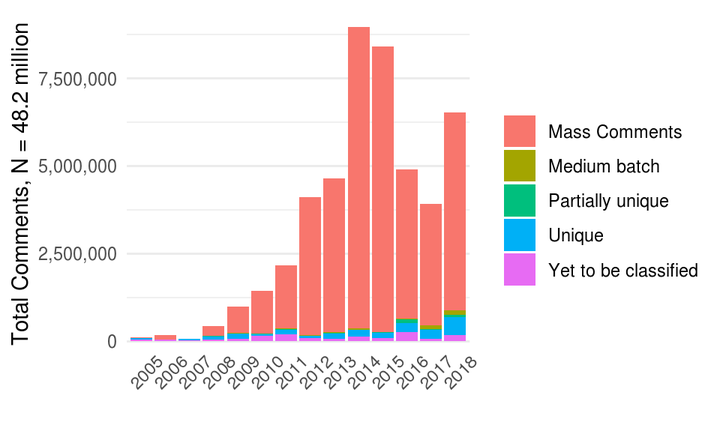I examine who participates in public pressure campaigns and why. Scholars of bureaucratic policymaking have focused on the sophisticated lobbying efforts of powerful interest groups. Yet agencies occasionally receive thousands, even millions, of comments from ordinary people. How, if at all, should scholars incorporate mass participation into models of bureaucratic policymaking? Are public pressure campaigns, like other lobbying tactics, primarily used by well-resourced groups to create an impression of public support? Or are they better understood as conflict expansion tactics used by less-resourced groups? To answer these questions, I collect and analyze millions of public comments on draft agency rules. Using text analysis methods underlying plagiarism detection, I match individual public comments to pressure-group campaigns. Contrary to other forms of lobbying, I find that mass comment campaigns are almost always a conflict expansion tactic rather than well-resourced groups creating an impression of public support. Most public comments are mobilized by public interest organizations, not by narrow private interests or astroturf campaigns. However, the resources and capacities required to launch a campaign cause a few larger policy advocacy organizations to dominate. Over 80 percent of public comments were mobilized by just 100 organizations, most of which lobby in the same public interest coalitions. As a result, the public attention that pressure campaigns generate is concentrated on a small portion of policies on which these organizations focus. I also find no evidence of negativity bias in public comments. Instead, most commenters supported draft policies during the Obama administration but opposed those of the Trump administration, reflecting the partisan biases of mobilizing groups.
Why Do Agencies (Sometimes) Get So Much Mail?
Lobbying Coalitions, Mass Comments, and Political Information in Bureaucratic Policymaking
